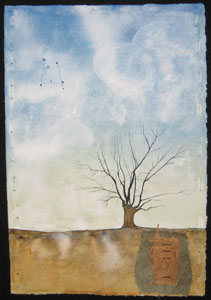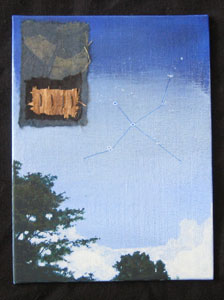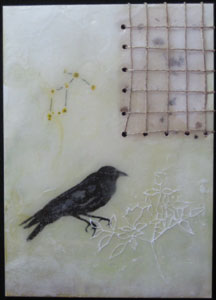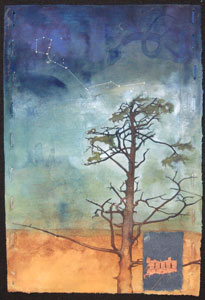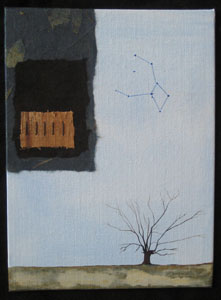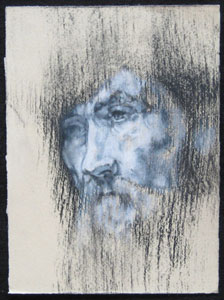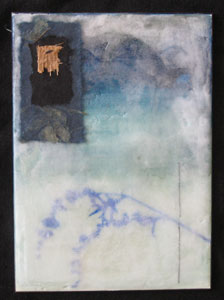grant kelley
about the artist
Grant M. Kelley was born in North Kansas City in 1977. He grew up in the small town of Excelsior Springs, Missouri, and graduated from high school there in 1995. He studied sculpture at Truman State University, and received his Bachelor of Fine Arts in the spring of 2000. For the past eleven years he has worked at hospitals, and is currently employed at a regional hospital in Liberty, Missouri, just north of Kansas City.
Visit Grant Kelley's website.
artist's statement
There are times the events that define the stages of my life seem impersonal, cruel, and random. The impression of purpose, its beauty that I sense weaving through those events is tenuous and all too quickly dispelled. My understanding of that purpose and beauty, of who I am and how the things I know just might symbolize something bigger and grander than my life is delicate, fragile, and temporary. I feel compelled to reflect on the things that for me come to represent a place where beauty, my understanding, and a form of truth meet. I paint and draw to record those impressions before I forget them, or change my mind about them, or realize that I was mistaken and it was all an illusion. My work is my process of reflection. In color, and in black and white, I mix media. I set to work with a general concept, a thing I'm thinking or feeling, and I let that mood guide me. I choose a sheet of paper, or a panel, or a canvas and I look at it. Usually, I look at it for some time before I start physically working on it. Maybe it sounds whimsical or even naive, but I think it opens a form of dialogue, a conversation, between what is happening there on that surface and whatever it is that I am considering. Only after I can relate the two do I start the physical act of painting or drawing. In black and white works I choose a subject, usually a person, or a face, and I begin to build an image on the page. I use charcoal, conte crayon, colored pencils, graphite, carbon sticks, and maybe a wash or two with water and a bamboo brush. I draw, and I think, and I stop when it intuitively feels like whatever notion I had and my drawing reflect each other. I set it aside for a day or two, and look at it again. If I still get that feeling, I sign the back. If not, I work on it until it does. In color works, I begin much the same way. I start with a notion, and choose a panel or a sheet of paper that I have wetted and stretched (which keeps the paper somewhat flat when working on it with water colors or wet paint) or a canvas. I look, and then I start working in background colors. When I reach a point with them where I am satisfied, I choose a subject to represent my notion. In color those subject tend to be broader than the black and white works: plants, animals, tools, mythical creatures, etc. Then I paint it. I use egg tempera, watercolors, inks, acrylics, really anything around me that I think can bring something worthwhile to what is occurring on the page. As I paint, I think about what I've chosen and what it means. Those thoughts lead me to other thoughts. Eventually, I start to reach conclusions, both on the work before me, and the notion I began with. There are symbols that I have used for years: snakes, constellations, pieces of paper sewn to the work, etc. I place those that I feel are appropriate to my subject on the work to relate this new notion or understanding with some of my other thoughts on things. I take a break from the piece after that. Maybe I give that break a day, maybe several, sometimes much longer. Then I come back and I look again, to make certain that I am done with it. If I am not done, I keep working at it. If I am I sign and date the back and move on to the next work. -Grant M. Kelley 10/2/2008
